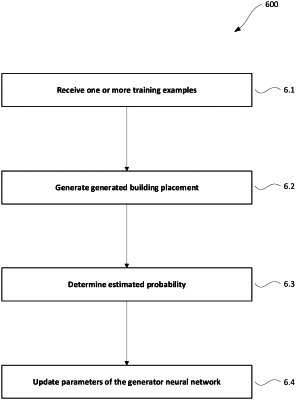| CPC G01C 21/3673 (2013.01) [G01C 21/367 (2013.01); G01C 21/3682 (2013.01); G06F 16/29 (2019.01); G06N 3/08 (2013.01)] | 20 Claims |

|
1. A computer implemented method of training a generator neural network for use in generating positions of map items for placement on a virtual map, the method comprising:
receiving one or more training examples, each training example including: (i) map data, including one or more channels of position information for a region, (ii) a latent vector, and (iii) at least one ground truth placement of map items;
for each training example of the one or more training examples:
generating, with the generator neural network, a generated placement of map items for the training example, including processing the map data and the latent vector of the training example;
determining, with a discriminator neural network, an estimated probability of the generated placement of map items being generated by the generator neural network, including processing: (i) the generated placement of map items (ii) the map data of the training example, and (iii) the latent vector of the training example; and
updating parameters of the generator neural network, including:
determining an adversarial loss using the estimated probability; and
updating the parameters of the generator neural network in dependence on the adversarial loss.
|